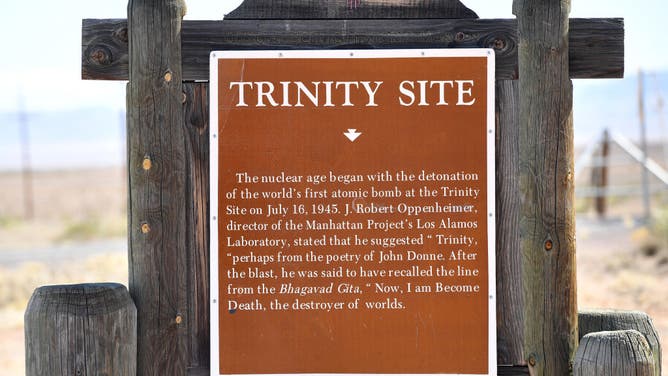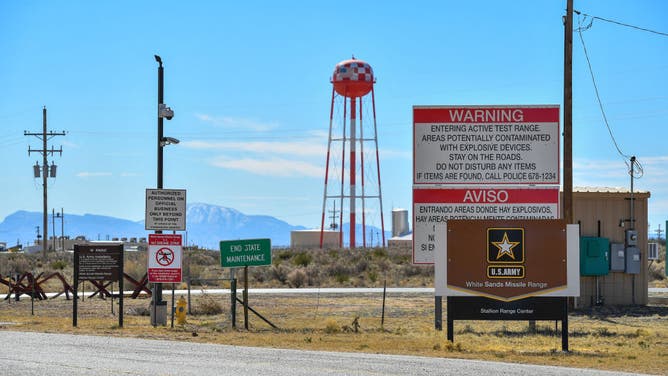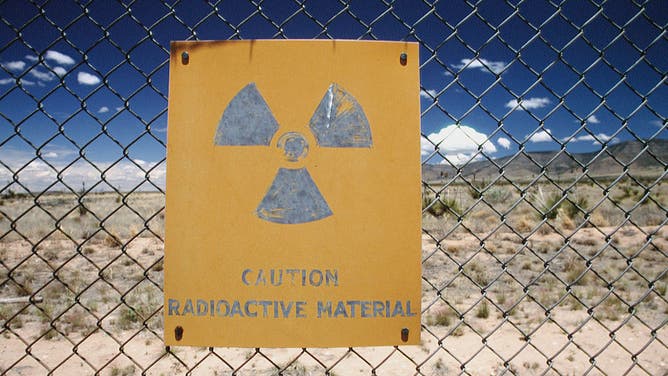High plutonium levels found near New Mexico neighborhood, research group claims
Dr. Michael Ketterer, a professor emeritus of chemistry and biochemistry at Northern Arizona University, collected water, soil and plant samples over the summer that he said had high concentrations of plutonium from decades of nuclear research in the Los Alamos area.
Arizona, New Mexico with most flood warnings on record this year
Arizona and New Mexico have seen the most amount of flood warnings on record -- more than three times the average to date.
SANTE FE, N.M. – A group of researchers associated with an organization known as Nuclear Watch New Mexico is warning that testing around a Los Alamos neighborhood has revealed what it calls "alarmingly high levels of plutonium."
Department of Energy officials say the area remains safe.
Dr. Michael Ketterer, a professor emeritus of chemistry and biochemistry at Northern Arizona University, collected water, soil and plant samples over the summer that he said had high concentrations of plutonium from decades of nuclear research in the area.
The mountainous region of northern New Mexico has been a hotbed of nuclear activity since the development of the Manhattan Project in the 1940s, raising questions about the sanctity of the surrounding environment.
"From 1943 to 1963, radioactive liquid wastes were disposed of by piping them over the canyon wall," the nuclear watchdog group stated. "Acid Canyon ultimately drains via the Los Alamos Canyon through San Ildefonso Pueblo lands to the Rio Grande."
In 1967, the Atomic Energy Commission (AEC) began the initial cleanup of the Acid Canyon region, declaring it ready for use years later. Despite the clean bill of health, the DOE conducted additional remediation efforts in the 1980s.
In 1984, the region was declared compliant, falling within acceptable regulation levels; however, some researchers questioned how thorough the remediation efforts actually were in cleaning up the land.
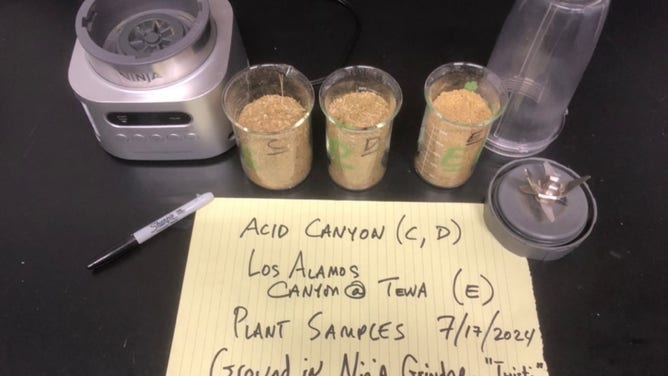
Study of material from Los Alamos
(Dr. Michael Ketterer / FOX Weather)
SATELLITE IMAGERY SHOWS MASSIVE HABOOB OVERTAKING PARTS OF DESERT SOUTHWEST, MEXICO
The nuclear watchdog group said its recent samples taken from unrestricted areas measured as high as 86 picocuries-per-liter, which was significantly higher than levels that are considered to be acceptable.
Ketterer claims his findings warrant state and local agencies to warn people to stay away from certain areas, but the DOE begs to differ about how groundbreaking his recent findings are.
"The Department of Energy’s Environmental Management Los Alamos Field Office (EM-LA) continues to collect and monitor sediment and water samples in the Acid Canyon area and the results have consistently shown the levels of plutonium remain very low and well within the safe exposure ranges," a DOE spokesperson said in a statement. "The data presented by Dr. Ketterer has been publicly available for years and further confirms the Department’s findings, that the levels detected continue to show that Acid Canyon remains safe for unrestricted use. EM-LA will continue to collect sediment and water samples to confirm levels remain low and will continue to make them publicly available."
Ketterer said of particular concern would be if a wildfire were to engulf the Acid Canyon.
High concentrations of plutonium would potentially be exhausted into the atmosphere, leading to impacts far away from the site of origin.
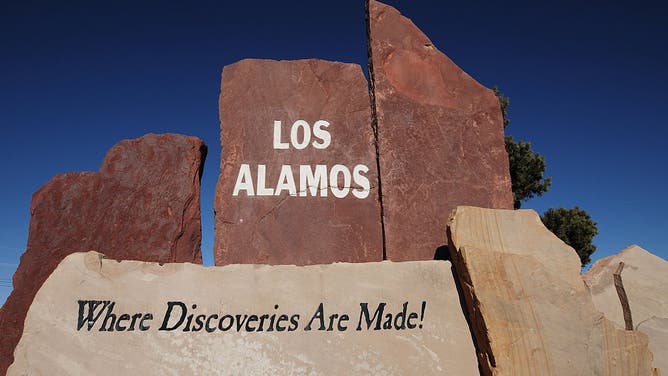
LOS ALAMOS, NM - FEBRUARY 27, 2016: A stone sign welcomes motorists to Los Alamos, New Mexico, home to the Los Alamos National Laboratory established in 1943 as part of the Manhattan Project, the nation's top secret program to develop the atomic bomb.
(Photo by Robert Alexander/Getty Images / Getty Images)
SEE THE EXTREME WEATHER VISITORS AT NATIONAL PARKS EXPERIENCE
Prolonged exposure to nuclear waste can lead to significant health impacts, effects that a community farther south in the state has reported experiencing for years.
On July 16, 1945, Manhattan Project staff conducted the first-ever nuclear test, which, according to the National Park Service, spread radioactive fallout over an area approximately 250 miles long and 200 miles wide in New Mexico.
The federal agency reported that in the decades afterward, people living in areas near the Trinity Project began to report a variety of health issues.
Cases of heart disease, leukemia and other cancers appeared to skyrocket in families without a prior history of health concerns, but the federal government never directly linked these impacts to the nuclear testing.
A group known as the Tularosa Basin Downwinders Consortium continues to fight for recognition and compensation for the impacts of the testing, a battle that has lasted nearly eight decades.

